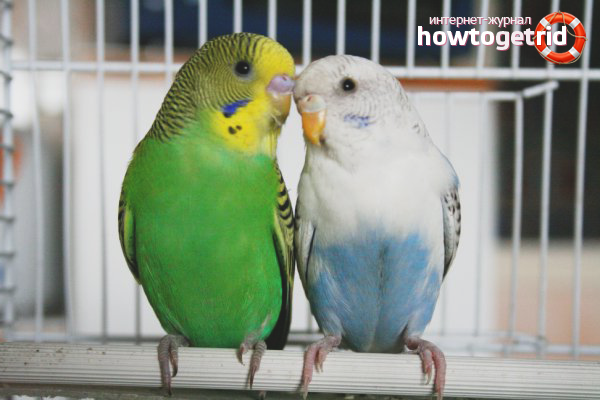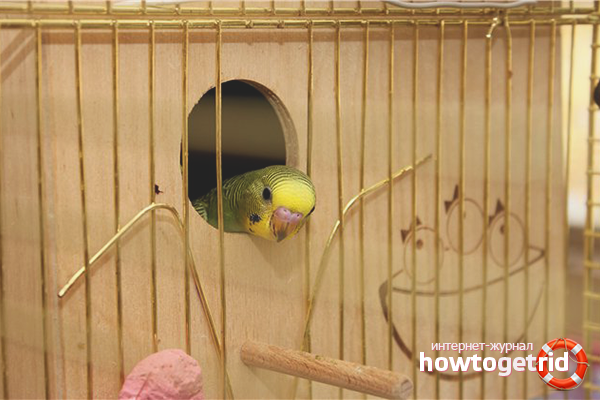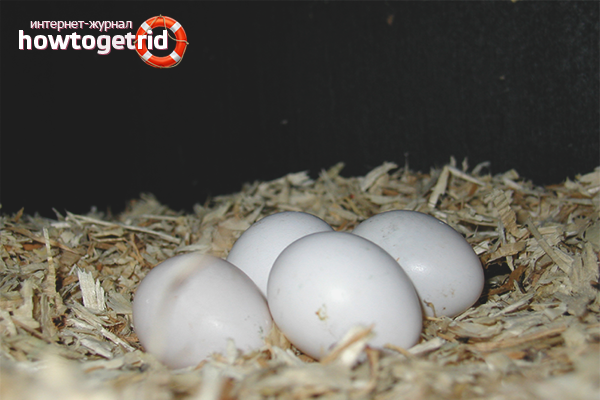The content of the article
Budgerigars are quite popular as pets. Fans of feathered friends seek to create optimal conditions for birds to make them feel comfortable. Many owners want to not only keep and care for parrots, but also seek to increase their numbers by breeding. It is important to understand that the creation of offspring is a troublesome business, it requires attention to details and observance of the peculiarities of the content. Consider the basic aspects in order, give practical recommendations.
Under what conditions is propagation possible?
- To begin with, it is worth noting that only healthy parrots can mate. Sick and weak birds that undergo rehabilitation are not suitable for the role of parents. They will not be able to lay eggs, as a result of which reproduction becomes impossible.
- In addition, it is important to consider the conditions under which the chicks can be born. This includes the sexual maturity of parrots, a properly balanced diet and the place of feeding, the duration of daylight hours, a nesting house, and temperature conditions (about 24-26 degrees).
- By the time you decide to breed parrots, make sure that the birds have reached puberty and can reproduce offspring. The optimal indicator for birds of this kind is considered the age from 1 year to 8 years. If you go beyond these limits, the babies hatch sick or weak, the female may die, because her body is not formed for masonry.
- As a fruiting female, obese individuals are not suitable. They often have tumors, in addition, the birds do not hatch eggs well, rolling from them. It is also worth paying attention to the plumage of a bird: if it molts, reproduction becomes impossible. Rinse the female with vitamins, otherwise she will not be able to bear the clutch.
The right pair
- To successfully obtain offspring, it is extremely important to choose the right pair of budgies. It is worth clarifying that in order to get strong offspring it is necessary to choose individuals from different parents. Another option suggests the presence of possible anomalies in the chicks, as well as diseases associated with heredity.
- When choosing a female and a male, give preference to individuals that previously have already paired with other birds. If you combine the parrots in an artificial way, they can “pull” with reproduction for about 2-3 years.
- If the selected parrots are completely healthy and active, they mate quickly enough. The first meeting of newly-made family members takes place in a cage reserved for them. If you notice that the birds do not try to tear out each other's feathers, but, on the contrary, get along, then offspring can be expected in the near future.
- When a male chooses a female, he begins to furiously look after her. Such behavior manifests itself in the cleaning of feathers for your “lady”, feeding from beak to beak. Also, males often make certain sounds like pigeon songs, raise a crest and actively flap their wings.
- As for the female, if she accepts courtship, she begins to nod her head, kiss her gentleman on the beak, cover her eyes. The girl tries to stay close to the boy, not paying attention to the exclamations of other parrots (if any).
- The attachment of budgies to each other lasts a lifetime. Intercourse takes place in a matter of minutes, as a rule, the owners do not notice this.In some cases, the birds mate for about 7-20 days until the process is started. If mating has occurred, budgies can find their mate among other birds. They spend a lot of time together.
- There are frequent cases when the couple does not add up to the “newlyweds”. In such situations, the female ignores the male, sits on the sidelines, behaves aggressively when he appears. Birds tear feathers to each other, showing their disinterest. Try to replace the rebel boy with a calmer roommate, observe the reaction of the female.
Suitable breeding season
- The optimal period for the reproduction of budgies is considered to be the time from June to September. During this period, the birds have enough daylight, heat and food rich in vitamins.
- Experienced zoologists do not recommend starting the procurement of parrots in early spring. In March-April, pets are still weakened after last spring. Their body lacks vitamins, birds will not be able to create healthy offspring.
- Chicks can hatch much later, for example, in the winter season. However, in this case, you need to create additional conditions. This includes lengthening daylight hours to 14-16 hours using daytime lamps or special lighting. It is also important to maintain the temperature at 20 degrees. The female needs to be fed with fresh herbs 3 times a day.
Breeding preparation
- Begin to prepare parrots for breeding 2-3 weeks before the moment when you are about to hang out a nesting house. Increase the daylight hours to 15 hours using the backlight, monitor the temperature in the room, it should not fall below the mark of 18-20 degrees. Otherwise, the birds will spend additional energy to warm themselves.
- To prevent premature molting from parrots, increase daylight hours gradually. First add 2 hours, then 1 hour, alternate the interval until you reach 15 hours. If the body temperature of animals is elevated, this will cause the death of the embryo in the future.
Breeding house for breeding
- The nest for breeding parrots should be sufficiently dimensional, bright, clean and warm. Cramped spaces must not be allowed, otherwise parents will begin to destroy offspring. Adhere to the dimensions: height - from 65 cm., Width - from 60 cm., Length - from 70 cm.
- Since females change their habitual behavior during the breeding season, they begin to nibble everything in sight. These include, first of all, bars of a cage, toys and even feathers of a male. To avoid such consequences, provide the “lady” with everything you need. Make sure that the house contains fresh carrots, fruit branches of different diameters and lengths, a sharpened fortified stone, etc.
- The nesting house must necessarily have a litter. Its role is usually played by hay or sawdust, which interfere with a dried pharmacy chamomile (medicinal). The plant prevents the infection of birds with parasites and has a beneficial effect on the nervous state of pets.
- The nest is placed in the cage no earlier than 7 days before the start of the proposed breeding (egg laying). Before doing this, you have to sanitize all the property of the birds and the cage itself. To properly carry out the procedure, wash the items with a solution of baby soap, then dry the metal elements in the oven. Place the plastic parts in the sun, wait about 6 hours.
- The more successful the breeding will be if you do not neglect the elementary rules. Daylight hours should be 15 hours, no less. The optimum temperature of the room in which the cell is located varies between 18-20 degrees. In winter, it is necessary to use artificial lighting and heating, in summer it is enough to open the curtains.As soon as dusk begins on the street, turn on the overhead light immediately. Avoid drafts in the room.
Feeding parrots during the breeding season
- It is worth clarifying that the nutrition of parrots should be comprehensive, balanced. It is also necessary to change water daily, providing birds with round-the-clock access to the drinking bowl. Make sure that the feeder is clogged with fresh plant foods. Once the product begins to fade, replace it with fresh.
- To strengthen the immune system, prepare a fortified supplement, give it once every 3 days. Mix half the boiled chicken egg (diced) with half the grated carrots and egg shells, powdered. You can replace the last ingredient with calcium for birds, which is sold in a veterinary pharmacy.
- Germinated grains are considered especially useful food for budgies. Increase the average daily portion by 2 times, starting the procedure 7 days before laying the first egg. At the same time, fortified chalk and a grindstone with grains can act as additional calcium. Periodically plant fruit tree branches on the birds. They will help grind off the beak and create an extra nest.
Hatching offspring
- A visual examination will help you determine whether a female is pregnant or not. The bird has an increased appetite, it loses feathers on the chest, the stomach becomes round. The male at this time sits near the nest, tweets, feeds his "lady". Similar signs indicate that the first egg will hatch soon.
- Young individuals lay fewer eggs than their older generation. The male does not hatch offspring, the future mother is engaged in this. After 6-7 days after laying the last egg, they must be checked. If the egg is fertilized, it will have a gray-white hue (matte), while unfertilized ones will be glossy yellow-white or spotted.
- As a rule, the duration of the incubation is 18-20 days. If the eggs have been in the nesting for longer than 3 weeks, they must be removed. Check the house every 3 days, get dead chicks and eggs with a dead embryo. After the first chick hatches, reduce the diet of pets, excluding germinated grains. In this case, increase the number of vegetables, which include carotene.
- When the chicks reach the age of 14 days, the female’s behavior will change significantly. She will become calmer, begin to leave the nesting more often. During this period, clean the litter and plumage of the house by carefully lifting the chicks with a gloved hand (!). Change the bedding, then return the babies to their place.
- Chicks begin to fly out of the cage after 1.5 months. Depart them from the mother 60 days after birth, and then return them to the shared house after three months. Remove the nesting area, reduce the hour of the pair to 9 hours, give the female only grain food to stop the laying.
As a rule, parrots of 2-4 years old are considered the most prolific. They can carry 3 offspring in 12 months, provided they are properly maintained. The older the birds, the more difficult it is for them to breed. Consider the health of the pet, previous diseases that have difficulties with feeding, sleeping, behavior to the opposite sex.
Video: budgerigar breeding












Submit